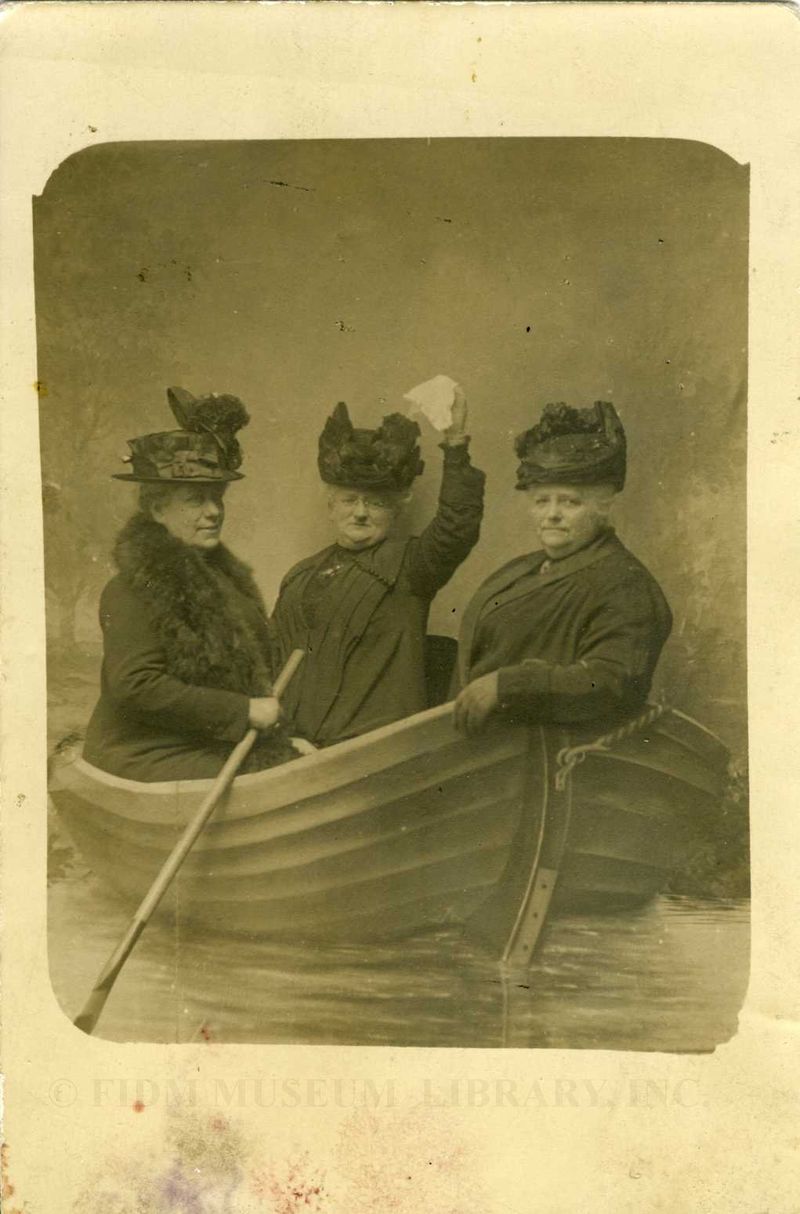Real photo postcard, c. 1910
Don't you love this wonderful photo of three women posed in a rowboat? Unlike formal nineteenth century portraits, these women are posed in a whimsical setting—a wooden rowboat. Despite the casual situation, they all look a bit ill at ease! Maybe they're worried that they won't get far with only one oar? Each woman wears a serious expression, but the woman in the middle reveals her sense of humor by waving a white handkerchief in the air. Is she waving bon voyage or SOS?
Posing c. 1910, these women are dressed for cooler weather. The woman at the left wears a fur stole draped around her shoulders. Jackets or wraps obscure the details of their outfits, but each woman wears a heavily decorated hat. Hats of this period were typically decorated with feathers, flowers, ribbon, and other natural or invented embellishment.
 C. 1910
C. 1910
Gelatin silver print Real Photo Postcard
Gift of Steven Porterfield
SC2010.897.60
This image could have been sent through the mail without an envelope. Called a real photo postcard, it is printed on postcard size (3 1/4 by 5 1/2 inch) photo paper. Flip the image over, and you’ll find a blank intended for a stamp and an address. Real photo postcards were introduced by Eastman Kodak around 1902, remaining popular through the early 1930s. Capitalizing on the popularity of informal snapshots and their Brownie camera, Eastman Kodak introduced postcard-sized photo paper with a pre-printed back. Within a few years, the company also developed an inexpensive camera that produced postcard-sized negatives. Less expensive than traditional portrait photography, real photo postcards allowed people to communicate their visual experiences to far-away friends and relatives. Popular subjects of real photo postcards included children, vacations, and prized possessions. Many real photo postcards also pictured people at their place of employment, a type of image probably intended to reassure friends and family! Real photo postcards often feature outdoor settings, inadvertently documenting the development of both urban and rural early twentieth century America.
Though many real photo postcards were taken by enthusiastic amateurs, professional photographers soon jumped on the bandwagon. Studio photographers created comic backdrops for real photo postcards. Paper moons were especially popular, and around 1910, when Halley’s Comet was visible, backdrops sometimes featured streaking comets. Traveling photographers set-up temporary studios at festive events such as fairs, resorts, 4th of July celebrations, and amusement parts. The mood of photos taken at these events was celebratory and often comic, offering sitters an intimate memento of a fun event. Backdrops (sometimes including real objects like the rowboat seen above) usually evoked the setting and/or the occasion. The picture of our three stoic ladies may have been taken at a beach resort or an amusement park. It was never sent, and has no written text identifying the sitters or the location.